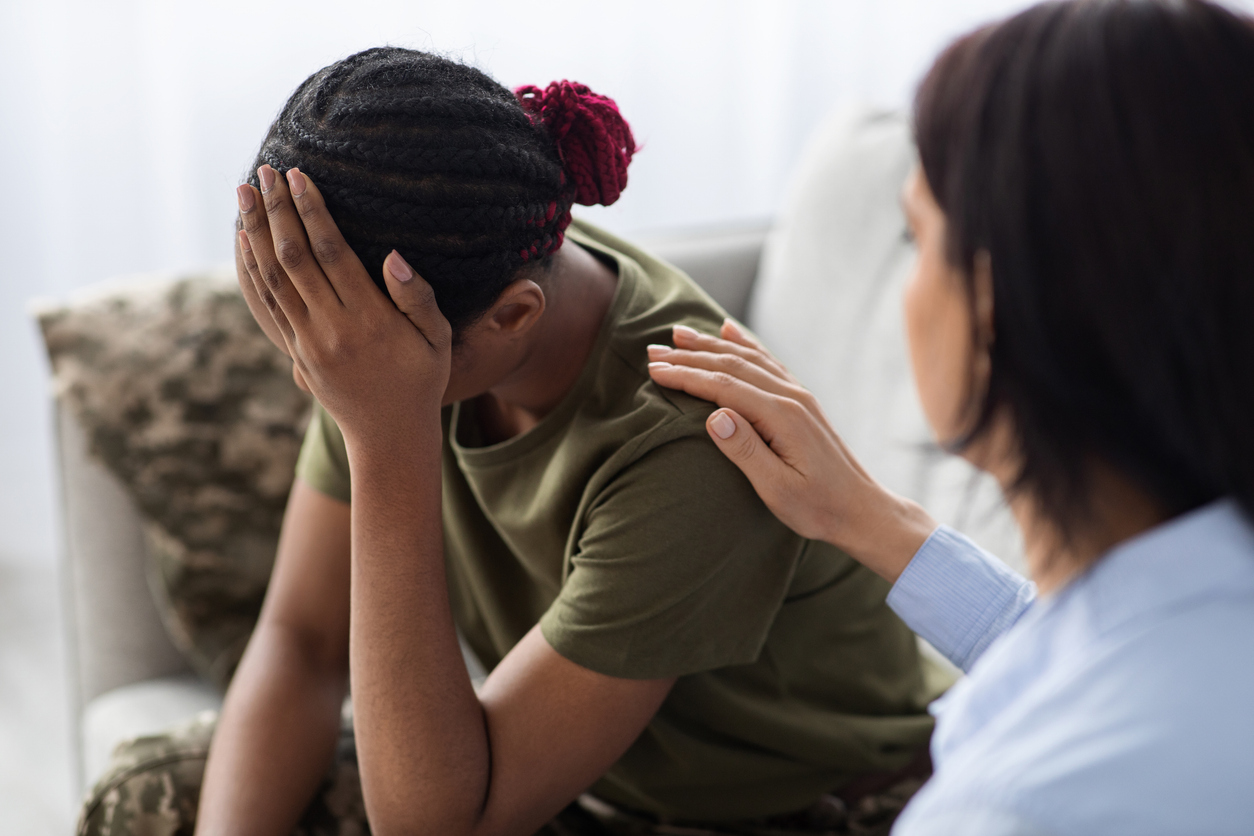You’ve probably heard someone jokingly say, “OMG, that’s giving me PTSD!” But the truth is, post-traumatic stress disorder (PTSD) is a serious mental health condition that affects way more people than you might think.
Nightmares, anxiety, flashbacks, and feeling emotionally numb — these are just a few of the ways PTSD can show up in someone’s life. And it’s not just veterans who experience it. About 3.5% of adults in the U.S. deal with PTSD every year, and one in 11 people will face it at some point in their lives.
PTSD symptoms can affect anyone who has experienced trauma, even famous people. But before we get to their stories, let’s talk about what having PTSD looks like and what causes it.

What is PTSD?
PTSD is a mental health condition that can develop after someone experiences or witnesses a traumatic event. PTSD symptoms can show up immediately or many years after the event itself.
“PTSD doesn't have to be about just one specific event. It can be. However, it can also be about a wide variety of micro-experiences that are traumatic in nature,” says Licensed Professional Clinical Counselor Kelsey Rehome-Peymann, MA, LPCC.
The Mayo Clinic breaks PTSD symptoms into four main categories:
-
Intrusive memories
-
Avoidance
-
Negative changes in thinking and mood
-
Changes in physical and emotional reactions
Everyone experiences PTSD differently, and symptoms can change over time—maybe getting better for a while and then worsening, making PTSD a complex and confusing condition. But the good news is that effective treatments and lots of support are available.
Some of the most famous faces you know have struggled with PTSD and have shared their experiences to help break down the stigma. “When celebrities share about their mental health conditions, it makes having mental health issues more common and acceptable,” says Rehome-Peymann.

Celebrities with PTSD
Although it can be hard to watch, seeing famous people struggle can kind of “even the playing field,” says Rehome-Peymann. It makes regular people feel less alone and might empower them to reach out for help.
“Fans see a celebrity they admire and find inspiration from and think, ‘If that celebrity has mental health issues and can do all the things they do, maybe so can I,’” she adds.
Whoopi Goldberg
Witnessing a mid-air collision between two planes in 1978 left actress and co-host of The View, Whoopi Goldberg, with a lingering fear of flying.
“It’s still hard,” Goldberg told Piers Morgan in a CNN interview. “The people on the plane were aware they were in some danger,” she adds.
“I’m a visualist, so if I see it, it lives in my brain, so I always see it.” A Virgin Atlantic course that helps people work through their flying fears helped Goldberg with some of the PTSD symptoms she experienced. Still, she traveled by private bus for years, only flying when she absolutely had to.
Lady Gaga
The musical and pop culture icon has been open about her struggles with mental health, including what she refers to as a “total psychotic break,” after her trauma resurfaced.
“I was raped repeatedly when I was 19-years-old. I also developed PTSD as a result of being raped and not processing that trauma,” she told Oprah on the Apple TV+ mental health docuseries The Me You Can’t See.
Each person who struggles with PTSD experiences the symptoms differently, which can make the condition difficult to understand, explain, and feel validation for what they’re going through. This unique experience can lead to feelings of isolation and a lack of understanding from others.
Lady Gaga has described feeling both physical and emotional pain when experiencing PTSD triggers. “First, I felt full-on pain, then I felt numb, and then I was sick for weeks after,” the singer said.
Gabrielle Union
After being sexually assaulted as a teenager, Union has battled PTSD for over 30 years and says it can turn her excitement for events into “pure agony.”
“Living with anxiety and panic attacks all these years has never been easy. There’s times the anxiety is so bad it shrinks my life. Leaving the house or making a left-hand turn at an uncontrolled light can fill me with terror,” Union shared in a 2022 Instagram post.
“No, it’s not like being nervous, and everyone experiences and deals with anxiety differently, and that’s OK,” she adds.
Union says she goes to therapy and speaks openly about her experiences in the hope that other survivors of trauma feel less alone.

Hope and healing are possible
Rehome-Peymann says the best way to support your loved one struggling with PTSD is to embrace them with radical acceptance and patience. “Don't question or judge their perceived experience. Just because something might seem small or mundane to you doesn't mean it is that way for everyone,” she says.
Fortunately, PTSD is treatable. Effective therapies can help people regain control of their lives and heal. Treatment plans are tailored to the individual but usually include some combination of the following:
-
Cognitive therapy
-
Exposure therapy
-
Eye movement desensitization and reprocessing (EMDR)
-
Medication
PTSD is a natural response to trauma — not a sign of weakness. Rehome-Peymann recommends working with a licensed professional if you’re struggling. “Managing current symptoms of PTSD is important before diving into healing or processing through your trauma,” she adds.
No one should be defined by their past or the daily PTSD symptoms they have to live with. And the most important thing to remember is that trauma is not the end.
Blair Sharp is a freelance writer who lives in Minnesota with her husband and son. Her words have been published in various publications, including Parents, SheKnows, The Bump, and Insider. Find her writing daily on LinkedIn and check out her weekly newsletter, Hey Freelancer! Head to her website www.blairsharp.com for more.




.jpg)



.webp)









.png)
%20Black%20Pepper%20Probiotics%20Organic%20Non-GMO%20Vegan%20Gluten%20Free%20Herbal%20Supplement.png)



%20Muse%E2%84%A2%20EEG-Powered%20Meditation%20&%20Sleep%20Headband.png)


